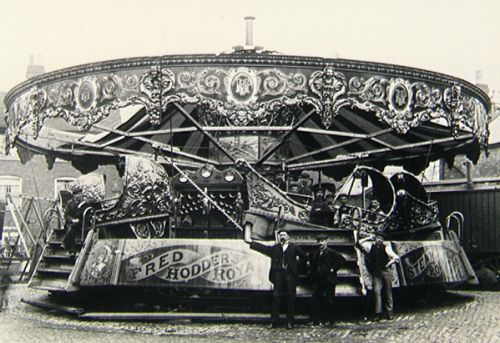Who invented the Carousel?
Carousel is one of many amusement rides and probably the oldest one. It usually has a rotating circular platform on which are placed seats for riders. Carousel is also known as merry-go-round, galloper, jumper, roundabout, horseabout and “flying horses”. Most carousels have seats shaped like horses although there are those that have other types of mounts like pigs, zebras, tigers, different mythological creatures, airplanes or cars.
The first fair rides that spin their riders appeared in 6th century and they originated in ancient Byzantium where people tied baskets to a center pole and spun people that set in them around. Carousels that we know today evolved from jousting games of 12th century Europe and Asia. Knights of that time would ride in circle and throw glass balls filled with perfumed water between themselves – which required great skill and horsemanship. Those that would drop the ball and break it would smell of perfume and be ashamed of their lesser skills. This game was called “little battle” or “garosello” in Italian and “carosella” in Spanish from where we have today's word “carousel.” In 17th century, the game was changed. Riders now had to spear small rings that were hanging over their heads. There was no more jousting but cavalry spectacles remained and commoners started participating in them. It became more and more acceptable for commoners (instead of just knight) to participate in “little battles” and a first children's carousel was made in 17th century just for kids and with small wooden horses.
Carousels became popular in 18th century when they started spreading in central Europe and England and could be found at various fairs and gatherings. They didn't have platforms and animals as modern ones, they only implemented the seats for riders, hung from the chains. These carousels were powered by animals or by people. Largest carousel makers of the time were Heyn in Germany and Bayol in France. 19th century saw improvements in design - carousels got platforms and animals for riding were now fixed to the platform. They were powered the same way as 18th century ones until 1861 when Thomas Bradshaw invented the first steam-powered mechanical carousel. Frederick Savage, inspired by Bradshaw's works, started making his variants of carousels and in 1870 he made a variant with velocipedes and a different variant with boats that would pitch and roll on cranks (he called it “Sea-on-Land”). He also invented a mechanism that allowed horses to move up and down as the carousel turns which simulates an actual horseback ride.
Carousels were very popular in the United States between the start of the 20th century and the Great Depression. After that economy crashed and many small carousels were destroyed. When the economy recuperated, technology for carousel production also improved and the rides were made from aluminum and synthetic materials. Carousels started growing larger and more exciting. Steam machines were replaced with electric motors.
Today, classic carousels are rare. Of the more than 4,000 carousels built in United States fewer than 150 survived. There are today museums and organizations that try to preserve them.
